Hyundai Kona vs Vauxhall Astra - Differences and prices compared
Costs and Efficiency:
When it comes to price and running costs, the biggest differences usually appear. This is often where you see which car fits your budget better in the long run.
Hyundai Kona has a slight advantage in terms of price – it starts at 23100 £, while the Vauxhall Astra costs 25200 £. That’s a price difference of around 2134 £.
Fuel consumption also shows a difference: Vauxhall Astra manages with 2.20 L and is therefore decisively more efficient than the Hyundai Kona with 4.60 L. The difference is about 2.40 L per 100 km.
In terms of energy consumption, the advantage goes to the Hyundai Kona: with 14.60 kWh per 100 km, it’s minimal more efficient than the Vauxhall Astra with 15.40 kWh. That’s a difference of about 0.80 kWh.
As for range, the Hyundai Kona performs to a small extent better – achieving up to 514 km, about 95 km more than the Vauxhall Astra.
Engine and Performance:
Power, torque and acceleration are the classic benchmarks for car enthusiasts – and here, some clear differences start to show.
When it comes to engine power, the Vauxhall Astra has a minimal edge – offering 225 HP compared to 218 HP. That’s roughly 7 HP more horsepower.
In acceleration from 0 to 100 km/h, the Vauxhall Astra is minimal quicker – completing the sprint in 7.50 s, while the Hyundai Kona takes 7.80 s. That’s about 0.30 s faster.
In terms of top speed, the Vauxhall Astra performs somewhat better – reaching 235 km/h, while the Hyundai Kona tops out at 210 km/h. The difference is around 25 km/h.
There’s also a difference in torque: Vauxhall Astra pulls noticeable stronger with 360 Nm compared to 265 Nm. That’s about 95 Nm difference.
Space and Everyday Use:
Whether family car or daily driver – which one offers more room, flexibility and comfort?
Seats: offers more seating capacity – vs .
In curb weight, Vauxhall Astra is hardly perceptible lighter – 1341 kg compared to 1370 kg. The difference is around 29 kg.
In terms of boot space, the Hyundai Kona offers hardly perceptible more room – 466 L compared to 422 L. That’s a difference of about 44 L.
In maximum load capacity, the Vauxhall Astra performs slight better – up to 1339 L, which is about 39 L more than the Hyundai Kona.
When it comes to payload, Vauxhall Astra slight takes the win – 509 kg compared to 490 kg. That’s a difference of about 19 kg.
Who comes out on top?
Overall, the Vauxhall Astra shows itself to be dominates this comparison and secures the title of DriveDuel Champion.
It convinces with the more balanced overall package and proves to be the more versatile choice for everyday use.
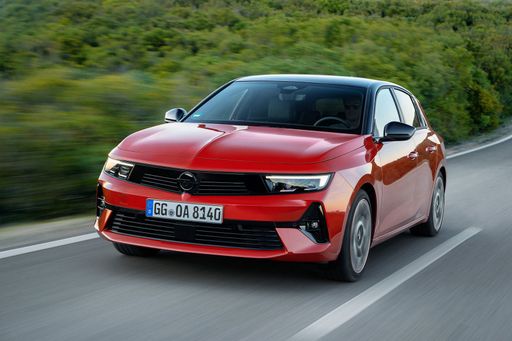 @ Opel / Stellantis Media
@ Opel / Stellantis Media
Vauxhall Astra
Costs and Consumption
View detailed analysis
Engine and Performance
View detailed analysis
Dimensions and Body
View detailed analysis
Hyundai Kona
The Hyundai Kona wears its personality on the outside with bold styling and sprightly handling that turns city driving into something a little more fun than a commute. It blends practical space, modern tech and sensible running costs into a compact, stylish package — a smart pick if you want flair without paying luxury prices.
details @ Hyundai Motor Company
@ Hyundai Motor Company
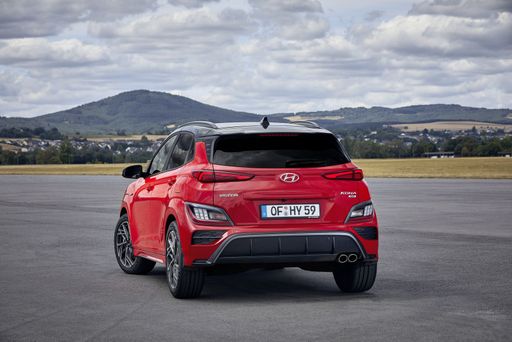 @ Hyundai Motor Company
@ Hyundai Motor Company
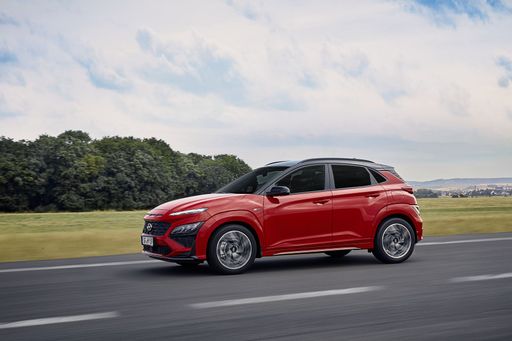 @ Hyundai Motor Company
@ Hyundai Motor Company
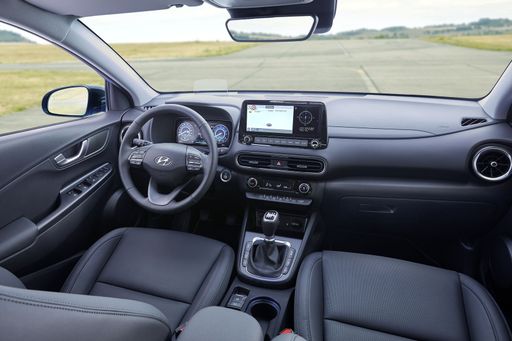 @ Hyundai Motor Company
@ Hyundai Motor Company
Vauxhall Astra
The Opel Astra strikes a neat balance between everyday practicality and engaging handling, so the daily grind suddenly feels a bit less dull. Inside it's intelligently packaged with modern kit and comfortable seating, making it a very sensible pick for buyers who want a dependable hatchback that doesn't take itself too seriously.
details @ Opel / Stellantis Media
@ Opel / Stellantis Media
 @ Opel / Stellantis Media
@ Opel / Stellantis Media
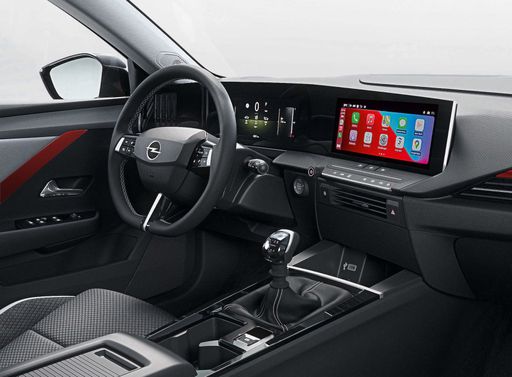 @ Opel / Stellantis Media
@ Opel / Stellantis Media
 @ Hyundai Motor Company
@ Hyundai Motor Company
|
 @ Opel / Stellantis Media
@ Opel / Stellantis Media
|
|
|
|
Costs and Consumption |
|
|---|---|
|
Price
23100 - 41600 £
|
Price
25200 - 40500 £
|
|
Consumption L/100km
4.6 - 7 L
|
Consumption L/100km
2.2 - 6 L
|
|
Consumption kWh/100km
14.6 - 16.8 kWh
|
Consumption kWh/100km
15.40 kWh
|
|
Electric Range
377 - 514 km
|
Electric Range
82 - 419 km
|
|
Battery Capacity
1.3 - 65.4 kWh
|
Battery Capacity
51 kWh
|
|
co2
0 - 163 g/km
|
co2
0 - 135 g/km
|
|
Fuel tank capacity
38 - 47 L
|
Fuel tank capacity
42 - 52 L
|
Dimensions and Body |
|
|---|---|
|
Body Type
SUV
|
Body Type
Hatchback
|
|
Seats
5
|
Seats
5
|
|
Doors
5
|
Doors
5
|
|
Curb weight
1370 - 1773 kg
|
Curb weight
1341 - 1736 kg
|
|
Trunk capacity
466 L
|
Trunk capacity
352 - 422 L
|
|
Length
4350 - 4385 mm
|
Length
4374 mm
|
|
Width
1825 mm
|
Width
1860 mm
|
|
Height
1580 - 1585 mm
|
Height
1432 - 1488 mm
|
|
Max trunk capacity
1300 L
|
Max trunk capacity
1268 - 1339 L
|
|
Payload
420 - 490 kg
|
Payload
414 - 509 kg
|
Engine and Performance |
|
|---|---|
|
Engine Type
Electric, Petrol, Full Hybrid
|
Engine Type
Petrol, Diesel, Electric, Petrol MHEV, Plugin Hybrid
|
|
Transmission
Automatic, Manuel
|
Transmission
Manuel, Automatic
|
|
Transmission Detail
Reduction Gearbox, Manual Gearbox, Dual-Clutch Automatic
|
Transmission Detail
Manual Gearbox, Automatic Gearbox, Reduction Gearbox, Dual-Clutch Automatic
|
|
Drive Type
Front-Wheel Drive, All-Wheel Drive
|
Drive Type
Front-Wheel Drive
|
|
Power HP
115 - 218 HP
|
Power HP
130 - 225 HP
|
|
Acceleration 0-100km/h
7.8 - 11.9 s
|
Acceleration 0-100km/h
7.5 - 10.6 s
|
|
Max Speed
162 - 210 km/h
|
Max Speed
170 - 235 km/h
|
|
Torque
200 - 265 Nm
|
Torque
230 - 360 Nm
|
|
Number of Cylinders
3 - 4
|
Number of Cylinders
3 - 4
|
|
Power kW
85 - 160 kW
|
Power kW
96 - 165 kW
|
|
Engine capacity
998 - 1598 cm3
|
Engine capacity
1199 - 1598 cm3
|
General |
|
|---|---|
|
Model Year
2024 - 2025
|
Model Year
2023 - 2025
|
|
CO2 Efficiency Class
A, D, C, E, F
|
CO2 Efficiency Class
D, A, C, B
|
|
Brand
Hyundai
|
Brand
Vauxhall
|
Is the Hyundai Kona offered with different drivetrains?
Available configurations include Front-Wheel Drive or All-Wheel Drive.
The prices and data displayed are estimates based on German list prices and may vary by country. This information is not legally binding.
